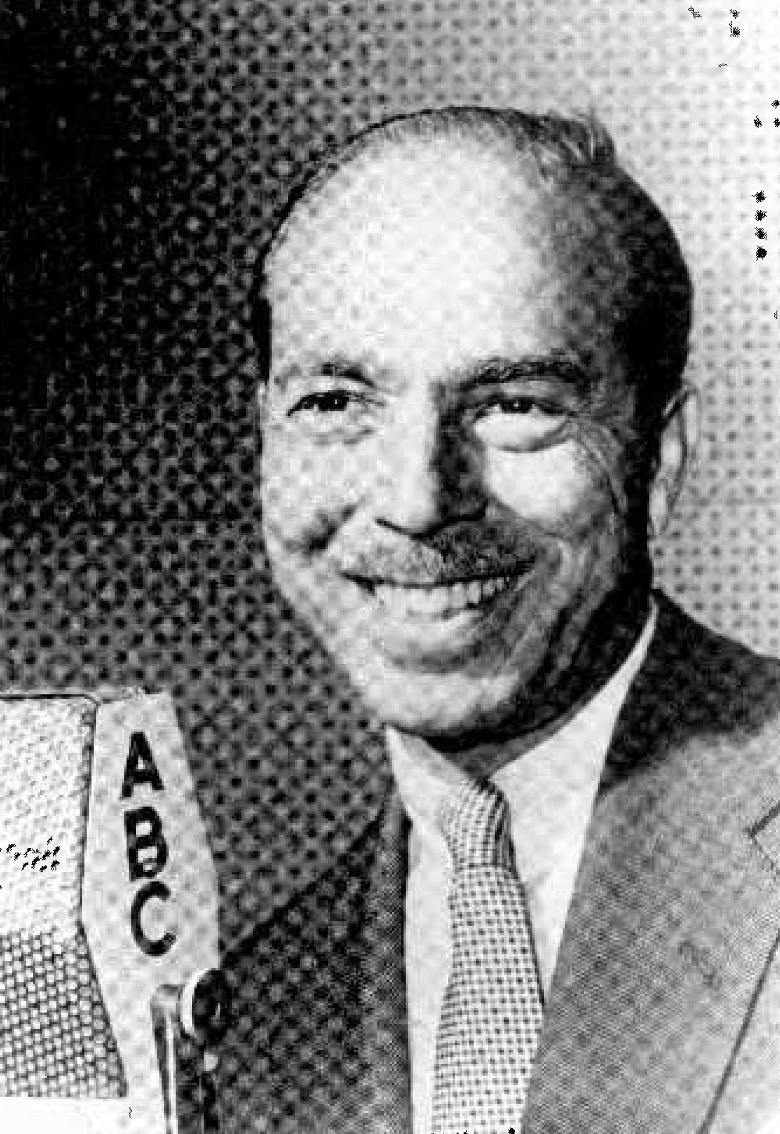Martin Block
Martin Block
U.S. Radio Announcer and Disk Jockey
The show most often credited with initiating the modern disc jockey movement was Martin Block's Make Believe Ballroom on WNEW in New York City. Block's Ballroom began in February 1935, during the trial of Bruno Hauptmann for the kidnapping of the Lindbergh baby. Block, who had started working at WNEW in December 1934 after moving to New York from California, was a $20-a-week staff announcer engineering the station's broadcasts of the trial.
Martin Block
Courtesy Library of American Broadcasting
Bio
Block convinced station manager Bernice Judis to let him use phonograph records to fill some of the gaps between trial segments. When the next recess arrived, Block introduced and played several records. His manner of presentation, however, was unique: Block pretended that the show was a live broadcast from a giant dance hall with a glittering chandelier. He played a master of ceremonies role, introducing songs as if the bands were actually there. The public was intensely interested in the Hauptmann trial, and Block found a ready-made audience. He located a sponsor, Retardo Weight Reducing Pills, and convinced the station to add the show to its regular schedule.
In time, Block's Make Believe Ballroom became the nation's preeminent disc jockey show, and during various periods it was broadcast over the Mutual and American Broadcasting Companies (ABC) networks. It was even syndicated over the Voice of America briefly. Thus Block became the first popular icon of the disc jockey genre and also its first millionaire.
Two important elements in Block's success were his voice, the tonal qualities of which evoked a physical sensation in some listeners, and his on-air personality. Because he had held various jobs as a salesperson prior to his radio career, Block could be quite persuasive. One New York bakery credited him with increasing their sales by 144,000 doughnuts in one week, and an appliance dealer in New Jersey claimed that his show helped the store sell 109 refrigerators during one of the state's worst snowstorms. Others have suggested that Block helped establish the careers of both Spike Jones and Dinah Shore.
Although the press labeled him "Block the Jock" and "the Lord High Admiral of the Whirling Disk," some radio personalities challenge Block's claim to being the first platter pilot. Al Jarvis was one. Jarvis was in radio on the West Coast when Block worked at XEFD in Tijuana and at KMPC in Beverly Hills, and Jarvis claimed to have had a record program on KFWB that premiered in March 1932 called The World's Largest Make Believe Ballroom.
Although others may have originally pioneered disc jockey programs, Block was the first record spinner to gain national recognition. By the end of World War II, he was making $100,000 a year at WNEW in New York. Variety celebrated the 15th anniversary of Make Believe Ballroom in 1950 with a number of specially dedicated articles, including tributes from Perry Como and Guy Lombardo. Block's work presaged the programming specialization, clock segmentation, and reliance on recorded music that would prevail in radio following television's arrival. Block's son Joel followed his father's footsteps in part: he co-hosts the Earth and Sky feature carried on public radio stations. Martin Block. Born in Los Angeles, California, 1903. Moved with his mother to Baltimore and New York after his father's death; began working at age 13 as an office boy for General Electric Vice President Own Young; worked as traveling salesman and pitchman selling razor blades, candy bars, and vacuum cleaners as a young man; moved back to the West Coast in 1930; began working in radio at XEFD in Tijuana and KMPC in Beverly Hills; hired at WNEW in New York City, 1934; later broadcast for WABC and WOR. Died in New York City, 19 September 1967.
Works
-
1935-54
Make Believe Ballroom
1944-50
Chesterfield Supper Club
1954-61
The Martin Block Show

